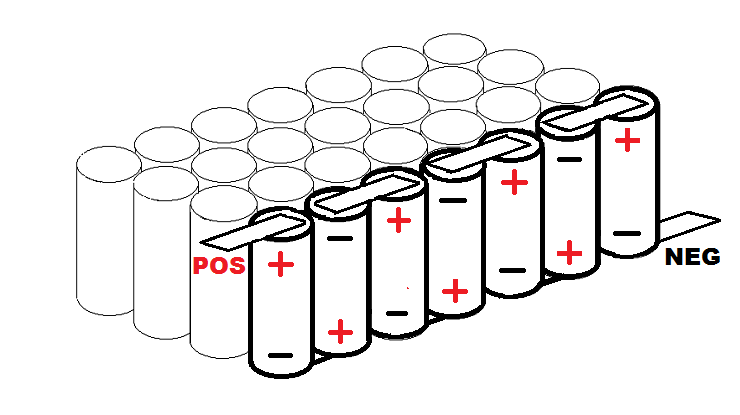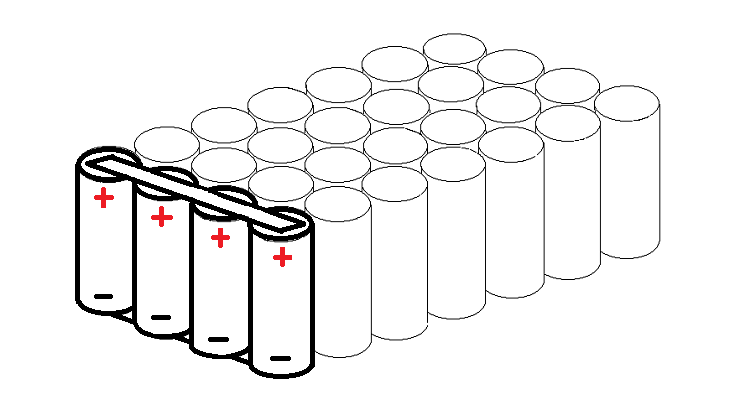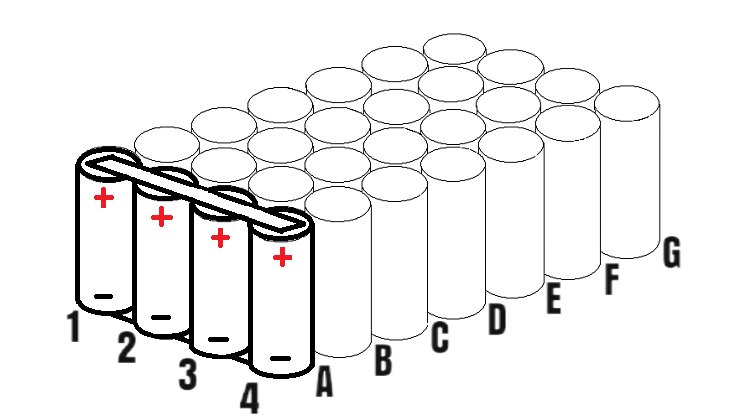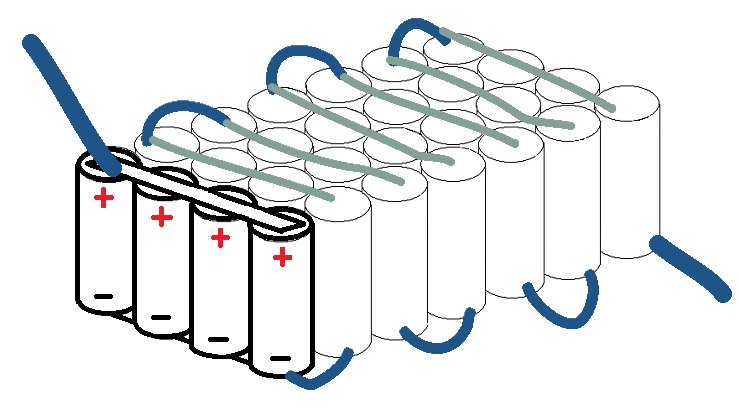That's the point of the plates--wires can't do what they do, which is make a large-area conductor plate that doesn't have interconnection points between them.john61ct said:Sorry as I said, I think need to visualize with wires only, I've looked at thousands of these plate / strip pictures and I just don't grok the both-together concepts that way.
So I'm hoping someone can draw a diagram that uses wires to replicate this weird layout y'all use with strip/plates.
If you want to replicate this common (not wierd) connection method with wires, you'd have to lace the wires into a braid that looks like solderwick, but in a big flat "plate"--but it still isn't the same, resistance-wise, as the plate.
Electrically, it's the same whetehr using wires or plates or strips, you're paralleling cells, and seriesing them to toher paralleled cells.
The grid-connection using spotwelded strips, shown in the pic below, in your quote, is electically the same as using a plate to do the same thing.
Assuming those are common 18650 cells, then sure there is. You can clearly see that the cells on the rigth of the arrows are the large flat ends, whcih are usually negative. The ones on the left of the arrows (where the arrows are pointing) are visibly buttons with a gap between them and the insulating ring / outer heatshrink.> Here is a pic showing the series current-flow of 25A through a common 5P pack.

Well there's no way to see which cells are positive end up and which negative
But it doesn't matter what direction the arrows point, the diagram is simply showing that the current flows serially from one cell to the next, and is not flowing along the parallel connection. If it had to flow across teh parallel connection first, to get to one of the series connections, it would be higher resistance along some paths than others, so unequal current distribution. But in this "grid" method,current flows the same to/from all cells.
That's exactly what happens in all the packs that use parallel groups of cells that are then connected in series, regardless of how you do it, electrically.If so then that's bog standard to me, the weird bit (for me), is the idea of an individual cell being connected to other cells in more than one way at a time.
Resistance of the paths from one to the next are the only significant electrical differences between the connection methods. (the only difference applicable to it being a battery, anyway).





